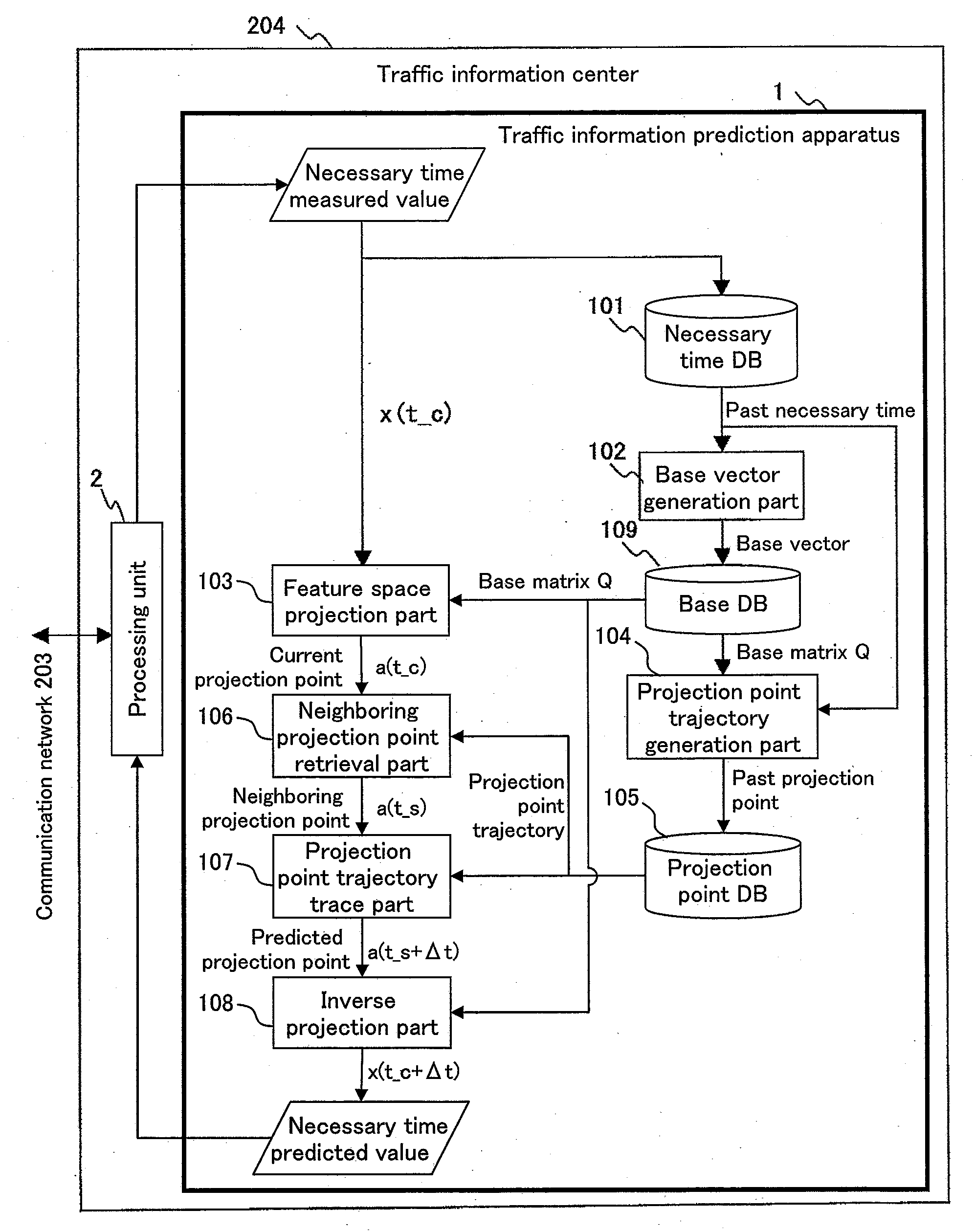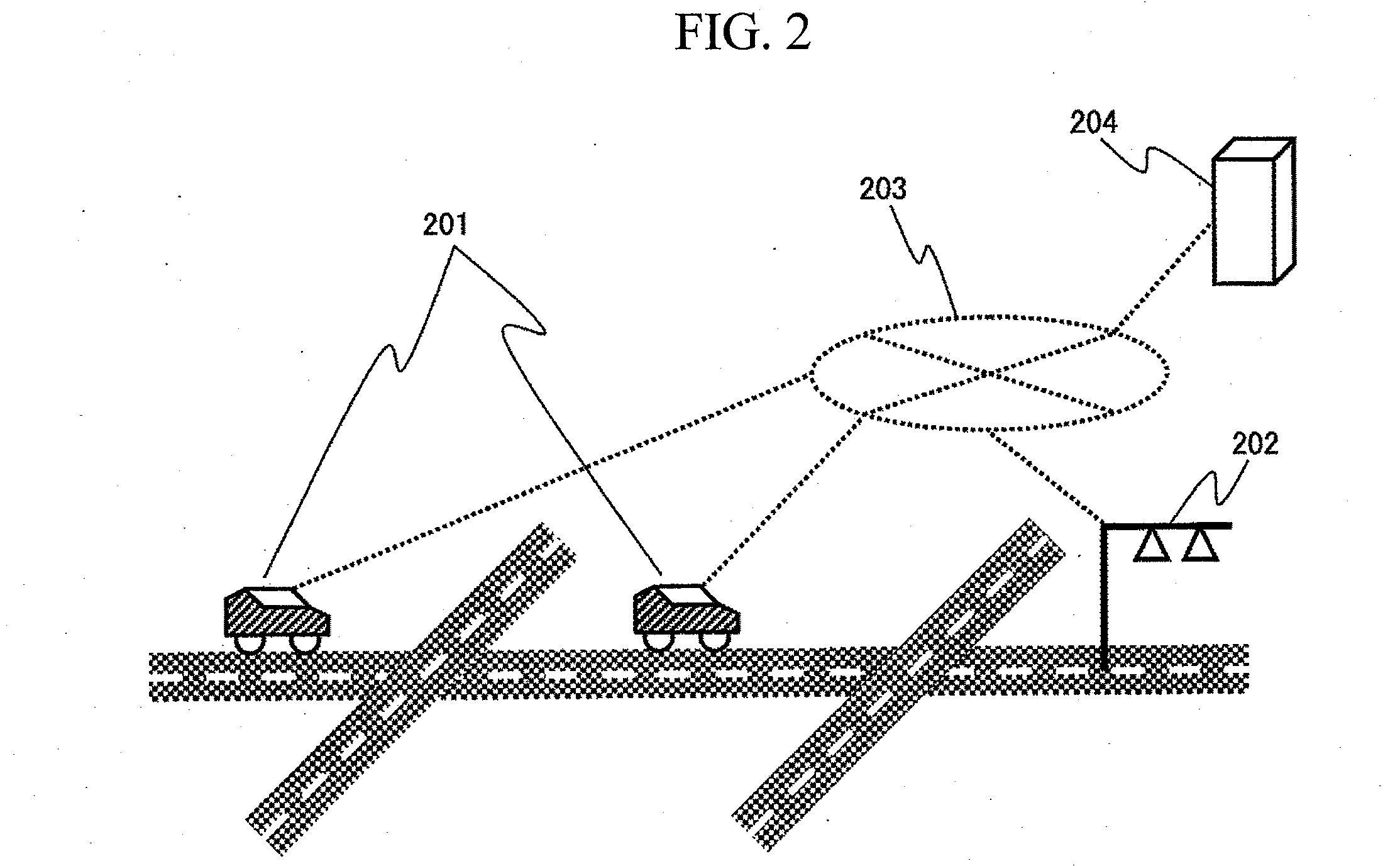Dynamic Prediction of Traffic Congestion by Tracing Feature-Space Trajectory of Sparse Floating-Car Data
a feature-space trajectory and traffic congestion technology, applied in the direction of vehicle position indication, instruments, analogue processes for specific applications, etc., can solve the problems of not always running the probe car in all the road sections, and the traffic situation cannot be predicted
- Summary
- Abstract
- Description
- Claims
- Application Information
AI Technical Summary
Benefits of technology
Problems solved by technology
Method used
Image
Examples
embodiment 1
[0023]FIG. 1 is a diagram showing an example of the configuration of a traffic information prediction apparatus according to an embodiment of the invention. A necessary time database (hereinafter, a necessary time DB) 101 is a storage unit that records the necessary time for each link inputted into the traffic information prediction apparatus 1. Herein, the link means a road section as the unit in processing the traffic information, such as a road section between main intersections. As regards the necessary time for each link, data (probe car data) collected by a probe car 201 on a road network and road sensor data measured by a road sensor 202 are transmitted to a traffic information center 204 having the traffic information prediction apparatus 1 across a communication network 203, as shown in FIG. 2.
[0024]In the traffic information center 204, the received data is converted into the necessary time on the concerned link by a processing unit 2, and inputted into the traffic informa...
embodiment 2
[0048]A modified embodiment having a different way of obtaining the predicted projection point from the embodiment 1 will be described below. In the embodiment 1, since the feature point trajectory draws the periodic trajectory, the neighboring projection pint is obtained by retrieving the projection point history of the past traffic situation data in the neighborhood of the feature point corresponding to the present traffic situation from the projection point DB 105, and the predicted projection point is obtained by tracing the projection point trajectory, starting from the retrieved projection point. On the contrary, the embodiment 2 is the same as the embodiment 1, except that a plurality of predicted projection points are obtained by retrieving a plurality of neighboring projection points, without using the single neighboring projection point, but, and the necessary time is predicted based on its representative value.
[0049]Specifically, instead of the neighboring projection poin...
PUM
 Login to View More
Login to View More Abstract
Description
Claims
Application Information
 Login to View More
Login to View More - R&D
- Intellectual Property
- Life Sciences
- Materials
- Tech Scout
- Unparalleled Data Quality
- Higher Quality Content
- 60% Fewer Hallucinations
Browse by: Latest US Patents, China's latest patents, Technical Efficacy Thesaurus, Application Domain, Technology Topic, Popular Technical Reports.
© 2025 PatSnap. All rights reserved.Legal|Privacy policy|Modern Slavery Act Transparency Statement|Sitemap|About US| Contact US: help@patsnap.com



